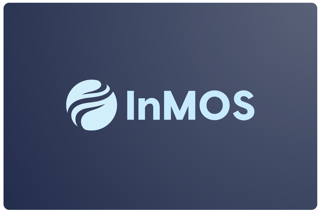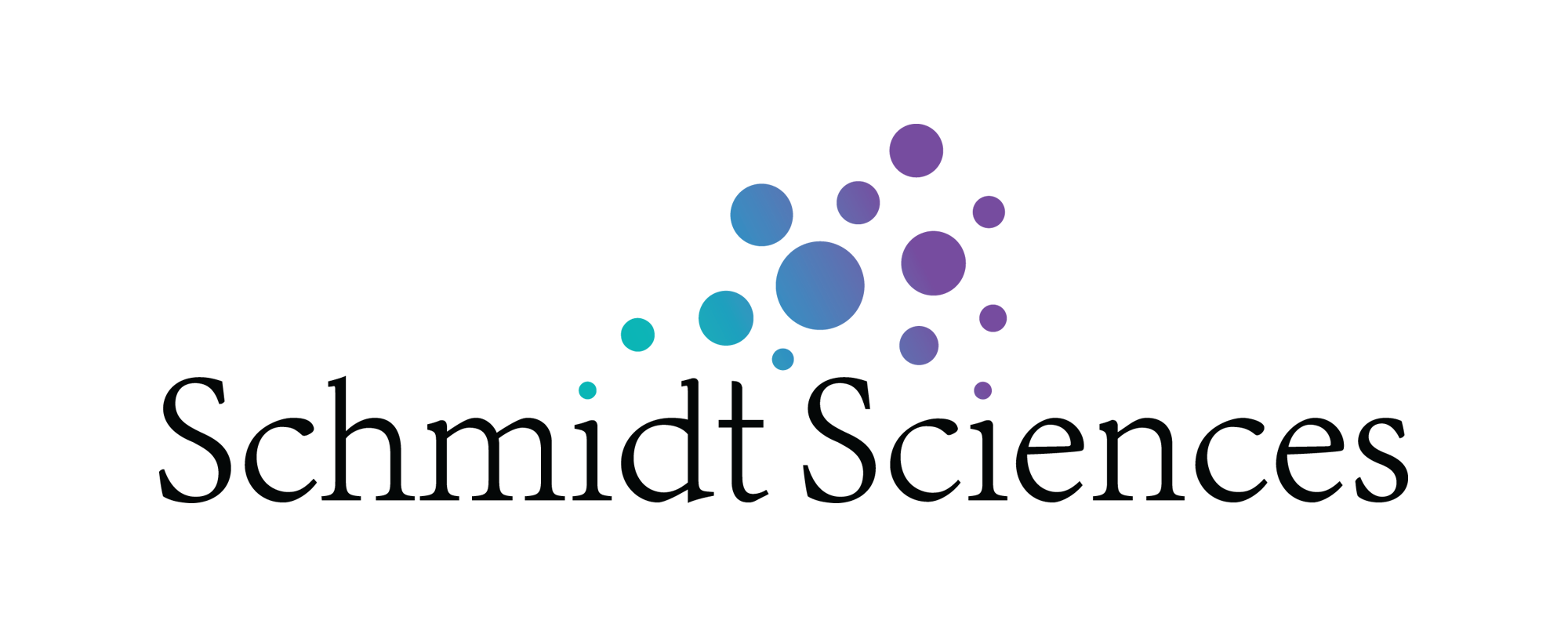Code of conduct
Purpose of document
A code of conduct (CoC) is a statement of understanding among ourselves about expectations of behavior and values, and as an external statement, reflects our commitments to the community.
This CoC applies to all members of the InMOS project. We also expect external collaborators to comply with this code when interacting with InMOS, and we extend guidelines (such as inclusion for authorship) to external collaborators.
Key aspects of this document: Inclusivity, professionalism and conduct, team meetings, unacceptable behavior, authorship, scientific integrity, and conflict of interest.
Management committee (or MC, Tim, Qian, Laure Z, Ralph) will deal with any issues arising.
This CoC serves as a living document and will be updated as needed.
Inclusivity
Enjoyable, high-quality research can only be conducted when we feel safe, secure, and supported. All group members are thus dedicated to a harassment-free experience for everyone, regardless of our personal characteristics and differences. The team recognizes that biases can be unconscious and creep into different aspects of academic life and research, such as meetings, publications, citations, hiring, etc. We will strive to consciously combat those biases and bring awareness to others.
Obligations to the InMOS project team: We’re on the same team. Help each other, especially those junior to you even if not directly working for you.
Be aware of, and address your positionality, power, privileges, and values.
Early career researchers (ECRs, or junior scientists) face additional challenges, having to navigate their career path in addition to performing their work. This additional uncertainty in their career can lead to added stress and possible burnout. If anything is placing overwhelming stress or preventing ECRs from performing at their potential, they are encouraged to discuss with their group lead or with any other mentors they feel most comfortable with. Sharing these issues can reduce stress and help others be accommodating towards their needs, and the team may be able to assist.
The InMOS team follows the principle that the whole is greater than the sum of its parts. As such all members are encouraged to communicate openly and frequently about their research, activities and the obstacles they might encounter along the way.
Professionalism and conduct
Be respectful in all interactions, communications, and actions.
Take care of your choice of medium for communicating sensitive matters (e.g., confidentiality, privacy, and the ethical handling of information and resources at the personal, institutional and national level).
English is the official language during meetings, team interactions and communications.
Make a point in learning people’s names and how to pronounce them correctly.
Meetings and interactions:
Be inclusive of all present, listen, invite input, be constructive.
Be mindful of dominant personalities, including yourself.
Employ appropriate and inclusive language.
Follow appropriate etiquette, such as raising your hand (or virtual equivalent) , waiting for the chair or facilitator/moderator to give you permission to speak, and help the chair when they are unaware of an issue.
Meetings should be structured. For meetings with multiple participants, an agenda, a chair (lead PI who is responsible for leading all discussions by following the agenda and staying on schedule), and a facilitator/moderator (the project manager) are recommended. For business meetings, or meetings that need a strategic report for management, the project manager will be appointed as the note taker.
Respect other’s working hours and limited availability or response time due to family, personal, and other situations.
Avoid misunderstandings and exclusion. Open communication of intent and understanding are key to avoiding misunderstandings and inadvertent exclusion.
Response time and deadlines: Timely communication and meeting deadlines are essential for our collective success and professional integrity. Team members are expected to adhere to all deadlines. This includes submitting the scientific report by the specified deadline (a contractual obligation), as well as any other requests by our funders (made directly or via Management Committee). Everyone is expected to address correspondence in a reasonable time. This includes correspondence from the MC, which often relates to contractual issues, and therefore cannot be delayed.
Team meetings
The team has limited occasions to meet and interact with each other, so it is particularly important to make these opportunities as effective as possible for everyone.
The facilitator/moderator should send the meeting invite associated with the agenda with enough notice for people to review it and add on items, if need be.
Similarly, if items on the agenda need advanced review time, they should be sent with enough notice for everyone to get a chance to review them and comment on them before the meeting.
The project manager is the facilitator/moderator and note taker during meetings with the whole team. During subgroup meetings, a chair and note taker should be designated, if need be.
During the meeting:
- Be present. Listen to others and avoid multitasking.
- Questions are best asked verbally, not in a written form. Raise your hand (or software equivalent), and wait for the chair or facilitator/moderator to give you permission to speak.
- Avoid side conversations. This applies to conversations in the chat window while videoconferencing.
- Additional points/comments that one prefers not to raise verbally during the meeting and side conversations on a specific topic are best reserved for our Slack channel after the meeting is over.
Unethical and/or unacceptable behavior
Unacceptable behaviors include racism, hate speech, harassment, threats, unwelcome sexual attention or contact, personal attacks.
If you are the subject of, or witness to, inappropriate behavior please inform a member of the management committee, or ask another member whom you trust to inform the committee.
Watch out for inadvertent slights or language that might unintentionally be hurtful to others.
Authorship
We will follow the Vancouver Group recommendations (VGR) on authorship for all InMOS publications and products (including software, datasets and presentations). The authorship guidelines apply to both InMOS members and external collaborators. Some key recommendations on authorship include:
Authors should meet the four following criteria for authorship, and all who meet the four criteria should be identified as authors.
Substantial contributions to the conception or design of the work; or the acquisition, analysis, or interpretation of data for the work; AND
Drafting the work or reviewing it critically for important intellectual content; AND
Final approval of the version to be published; AND
Agreement to be accountable for all aspects of the work in ensuring that questions related to the accuracy or integrity of any part of the work are appropriately investigated and resolved.
In addition to being accountable for the parts of the work done, an author should be able to identify which co-authors are responsible for specific other parts of the work.
Authors are responsible for citing references accurately and should be able to attest that the references cited support the associated statement. References should be verified using a bibliographic source or original sources.
The criteria are not intended for use as a means to disqualify colleagues from authorship who otherwise meet authorship criteria by denying them the opportunity to meet criterion #s 2 or 3.
Non-author contributors: Contributors who meet fewer than all 4 of the above criteria for authorship should not be listed as authors, but they should be acknowledged.
The criteria used to determine the order in which authors are listed on the byline may vary, and are to be decided collectively by the author group.
The corresponding author is the one individual who takes primary responsibility for communication with the journal during the manuscript submission, peer-review, and publication process. The corresponding author should be available throughout the submission and peer-review process to respond to editorial queries in a timely way, and should be available after publication to respond to critiques of the work and cooperate with any requests from the journal for data or additional information should questions about the paper arise after publication.
When a large multi-author group has conducted the work, the group ideally should decide who will be an author before the work is started and confirm who is an author before submitting the manuscript for publication.
- Some large multi-author groups designate authorship by a group name, with or without the names of individuals. When submitting a manuscript authored by a group, the corresponding author should specify the group name if one exists, and clearly identify the group members who can take credit and responsibility for the work as authors. The byline of the article identifies who is directly responsible for the manuscript.
AI-assisted technology
This is an in-progress effort. The team will keep monitoring policies at institutional, publisher (e.g., journal) and funder level and update this section as needed.
Humans are responsible for any submitted material that includes the use of AI-assisted technologies.
Authors who use AI-assisted technology (such as Large Language Models [LLMs], chatbots, or image creators) should describe, in both the cover letter and the submitted work in the appropriate section if applicable, how they used it.
For example:
If AI was used for writing assistance, describe this in the acknowledgment section, such as “AI tool X was used to help in editing the paper for clarity.”
If AI was used for data collection, analysis, or figure generation, authors should describe this use in the methods.
Authors should not list AI and AI-assisted technologies [Chatbots (such as ChatGPT)] as an author or co-author, nor cite AI as an author.
Authors should be able to assert that there is no plagiarism in their paper, including in text and images produced by the AI. Humans must ensure there is appropriate attribution of all quoted material, including full citations.
Using AI-generated material as a primary source is not acceptable except when that material has been subject to formal peer review.
We will use the Contributor Role Taxonomy (CRediT) for describing the authorship contributions. Some highlights include:
CRediT is a standardized system that defines 14 distinct roles contributors can play in a research project, allowing for transparent and consistent attribution of contributions to scholarly publications.
CRediT 14 contributor roles:
Conceptualization
Data curation
Formal analysis
Funding acquisition
Investigation
Methodology
Project administration
Resources
Software
Supervision
Validation
Visualization
Writing – original draft
Writing – review & editing
Ideas for manuscripts are often the results of team discussions and/or casual conversations among different members. Authors should strive to keep lines of communication with the rest of the team open at all stages of a manuscript creation, but especially in this early stage, when the same idea might have bubbled simultaneously in different minds. The creation process of manuscripts should then allow sufficient time for co-authors to contribute and review. Participants should strive to contribute and respond in a timely manner.
Consequently, authorship should be established early in the creation process and established openly by expressing intent to the group; there are often parallel efforts underway in such an interconnected project and we wish to not deprive anyone of the opportunity to publish their own efforts when it appears to be a duplication or “scooped”.
In an academic publication, if any aspect of the work was supported by Schmidt Sciences, the authors should acknowledge “Schmidt Sciences”. Here are the communications guidelines when referring to the support from Schmidt Sciences:
send advance notice by emailing a copy of the manuscript or pre-print to your contact at Schmidt Sciences, and
use the following language in the appropriate acknowledgements section (select one):
“This project is supported by Schmidt Sciences, LLC.”
“This research received support through Schmidt Sciences, LLC.”
“Support was provided by Schmidt Sciences, LLC.”
For all other publicity or external communications regarding the grant (e.g., press releases or other communications with media that are about/explicitly discussing the gift from Sciences i.e., where they are choosing to mention “Schmidt Sciences” in some fashion), please coordinate with Schmidt Sciences before using the name or logo by emailing your designated program contact ten days in advance for review and comment.
Scientific integrity
Research should be evidence based and presented accurately and honestly, without misleading statements or withholding of pertinent information.
Research should ultimately be confirmed and verified by peers, i.e. published in peer-reviewed journals.
Transparency and reproducibility of the research and publication process are required, not only to aid the peer review process but also as a guiding principle.
The InMOS team is committed to disseminate its research as broadly as possible. Whenever possible, all publications should be submitted open access, whether via the journal as a whole, or via payment of an open access fee. When not possible, all coauthors should take steps to submit the manuscript in their respective institutions’ internal server for publications, and also a pre-review server such as arXiv. Please note that Schmidt Sciences has a nonexclusive license to copy, publish and distribute any publications, studies, research or other copyrightable works funded by this Grant
The investigator’s intellectual contribution and time committed to collect observations or design and execute numerical experiments entitle them to the primary benefits associated with that dataset. Publication of descriptive or interpretive results derived immediately and directly from the observational or modeling data is the privilege and responsibility of the PIs. However, to further OBVI collaboration and science objectives, the PIs are encouraged to share their preliminary data with colleagues prior to their public release.
Rapid sharing of preliminary data within OBVI: Investigators are expected to make preliminary data, metadata, and results freely available to other participants within 6 months of data acquisition/processing for observations and within 6 months after the end of numerical simulations. Investigators should update the OBVI_Data_List (including parameter name, brief description, person of contact, status, availability…) and then the project manager will update it on Basecamp to let the OBVI community know about available data.
Long-term public sharing: Data used in publications should be made openly available, not just upon request. This can be prohibitive for some datasets but reduced forms of the data, as presented in the publication, are a minimum requirement. This is becoming the minimum standard at many society journals.
Any person wishing to make use of InMOS or OBVI observational data and model experiments should communicate with the PIs at the start of the analysis. It is anticipated the PIs will be offered co-authorship of any published results, if they wish. In cases where investigators choose not to be co-authors on publications that rely on their data, the Data User has an ethical obligation to cite and appropriately acknowledge the dataset (including the investigator’s name and funding source).
Copyright on codes: As far as possible, all codes (including Analytical workflows, software tools, and numerical model codes and configurations, etc.) produced within the context of InMOS should be made freely available through the public domain, e.g., hosted by or linked to the InMOS GitHub if hosted within a personal github repository. Links to GitHub, Zenodo or other relevant repositories should be included as part of the metadata associated with datasets. Software produced in collaboration with InMOS but not solely for InMOS should be open source and accessible without fee or authentication barriers. It is reasonable to use private repositories during development. The particular license is up to the original authors but i) should ideally be consistent with your host institution, and ii) must be either FAIR or open source. We suggest the MIT license . For other products such as text, images, websites, etc., we suggest the Creative Commons CC-BY license .
InMOS scientific impact will rise higher if all its parts are lifted higher. As such, members are encouraged to maximize each other’s contributions to the project when opportunities arise (after checking for permissions).
Conflicts of interest
Many members of InMOS are involved in other projects or have collaborators conducting related research. If a research idea being actively pursued by InMOS happens to overlap with a colleague or collaborator of InMOS then there can be a conflict of interest, or a perception of such even if none exists. We expect members to recognize or anticipate these situations and to inform InMOS of any overlap to avoid problems arising, discussing them with the management committee.
Disclosure and regular communication within InMOS is by far the best way to avoid misunderstandings and conflicts among the team.




